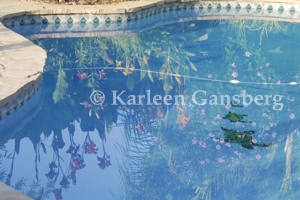Improve your photography by studying shadows and reflections
Ok, so you know that photography is all about “Light”. You UNDERSTAND it and you know how to USE it and make your camera work, but do you really SEE THE LIGHT and know when to ANTICIPATE it? You’ve been told what the best times of the day are for outdoor photography and you know how to read the light with your camera and all the technical STUFF and on and on, blah, blah, blah. Have you really EXPERIENCED the light? I’m referring to sunlight not heaven’s light 🙂
I have always suggested to people that they test their camera and lenses by bracketing (using several different settings) for each photo at different times of the day etc, until they are familiar with how that particular camera and lens work and which film and settings work best for which situations. So, now enter the digital age, same thing. Do the tests; bracketing f-stops; various speeds; various ISO, and whatever other settings your particular camera may have.
Ok, now let’s do a test that involves your eyes more. Hopefully you can have a day (preferably several days) when you can be outdoors sun up to sun down. You can do this indoors too, if you have a lot of sunlight coming in to create shadows.
1) Think about shadows from sun up to sun down.
2) Search for shadows, find as many as you can.
3) Observe the shadows as they change. Don’t wait for an hour before you look at a particular shadow again. Check it often and think about how it has changed.
- Is it darker and more defined than it was?
- Is it smaller or larger than it was? Longer or shorter?
- Where is the sun in relation to the item causing the shadow?
- If you can move or turn that item, how does the shadow change when the item is moved? Is it a more definite shape now, or less definite?
- Photograph the shadows without any care of what the item is, just photograph the shadow at various settings and at different times of day. Make it a point to not shoot anything but shadows for at least several days. You can observe those photos at the end of each day.
Do this for a few days or as many days as it takes for you to start noticing shadows without even thinking about it. Hopefully your eye for shadows will become so honed in that you start seeing shadows everywhere, indoors; outdoors; while you are walking; while you are driving. You will notice the large shadows from things like buildings; bridges; clouds and trees. You’ll notice smaller shadows from things like small rocks; birds; even something as small as a spider. You will notice shadows everywhere that you never paid any attention to before.
REFLECTIONS
Once you have mastered spotting and photographing shadows then try the same thing with reflections.
1) Think about reflections from sun up to sun down.
2) Search for reflections in lakes; pools; puddles; any liquid anywhere (how about in a cup of coffee?); any reflective surface, a glass table top; sunglasses. Keep your eyes open for any reflection
3) Observe the reflections at various times of the day.
- Where is the sun in relation to the reflection?
- Is it a tall reflection; short reflection?
- Is the reflection brighter or dimmer at different times of the day?
- Look at the reflection from various angels.
- Photograph the reflection without any regard to what the subject matter is that is being reflected. Just photograph any reflections you see.
The great thing about DSLR cameras is that the technical information is all recorded and you don’t have to stop and write everything down before proceeding to the next one (as is the case with film photography). You will want to review this information when you are reviewing the shadow and reflection photos you’ve taken. Study it, learn from it, absorb it.
Happy Shadow Shooting




